Editor’s Note: This piece was a finalist in the Pulse writing contest, “On Being Different.”
Being different is often viewed as bad. At a young age, I learned that it meant you didn’t belong. I vividly remember watching the Sesame Street puppets dance and sing about an object that “didn’t belong” because it was “not like the others.”
Throughout my school years, I tried hard to fit in. Being overweight, and as uncoordinated as they come, I constantly felt out of place in my body and among my peers. I remember trying so hard to make people laugh, to win them over.
Sometimes that strategy worked, as it did with my lifelong best friend. I found out later that she loved me for me, not because I was funny; but mostly my classmates thought I was trying too hard, which left me feeling isolated and self-conscious.
The harder I tried, the clearer it became that I was not a typical teenager. I made it my mission to find out what other kids liked to do for fun, like painting or roller skating, and then invited them over to do those things, which in reality I had no idea how to do. My overzealous attempts strengthened my classmates’ view that I was weird.
Then, two months after my nineteenth birthday, I received solid proof of my difference: I was diagnosed with scleroderma.
I’d started to feel stiff and tired all the time—fatigue that no twenty-minute power nap could cure. I also had bad joint pain, especially in my hands and wrists; I couldn’t even make a fist. Finally I sought medical attention, which led to my diagnosis.
Scleroderma, an autoimmune disease, affects the skin and other organs. Its main symptoms are thickening, tightening, inflammation and scarring of the tissues in the lungs, kidneys, heart, digestive system and elsewhere. It has no known cause—and no known cure.
When I first received the diagnosis, I felt numb. I had no idea what it might mean. The doctor described scleroderma as a mysterious, incurable disease that mostly affects older women.
“Scleroderma is a progressive disease,” he added, advising me to “get your affairs in order” and to work as long as I could.
Hearing this felt devastating. I had my whole life ahead of me; I’d made plans for the future. Now life felt so uncertain. Still, I didn’t look or feel terribly sick, so I brushed off the diagnosis, telling myself, I’ll beat the odds.
Over the next five years I floundered around, searching for ways to deny my diagnosis—and I struggled to communicate my thoughts and feelings about it, even to my family members. Scleroderma had made my worst nightmare a reality: I was different. But talking about the diagnosis would make it feel even more real, so I suffered in silence, keeping my fears to myself and isolating myself from the people I loved most.
Meanwhile, my physical appearance—my facial features, my height, even my shoe size—began to change. I was slowly becoming unrecognizable, even to my family. I began to despise the sight of myself in the mirror. The inner pain and loneliness felt unbearable: At times, I thought of taking my life.
One bright spot amid the torment was my wonderful rheumatologist. Together, we worked with my other specialists to counteract my symptoms with medication and lifestyle changes. Nonetheless, I still felt a disconnect between my physical reality and my emotional states.
My disease’s erratic progression added to the confusion. Sometimes I felt great—pain-free, happy, excited for the days ahead. I enjoyed painting as a means of expressing the emotions I didn’t want to voice openly. Other times, my life felt like the movie Groundhog Day—weeks of stiffness, ulcerated sores, breathing problems and more.
Seemingly in the blink of an eye, nine years passed—and I’d been through dramatic changes. Too sick to attend college, I’d taken a medical leave; eventually I quit my full-time job and went on Social Security disability. But these losses led me to seek out new opportunities.
For instance, I still hadn’t met anyone else who was living with scleroderma. I needed to find a tribe. So I shared my story on social media, thinking, If I could connect with scleroderma patients, my fears of being different might dissipate.
I joined a local support group and made some amazing new friends—but they’d all been diagnosed later in life, so I couldn’t shake my sense of not fitting in. Still, they encouraged me to open up to others about my struggles. Gradually, I began to speak honestly and vulnerably with my friends and family.
Paradoxically, as my disease advanced over the next seven years, my courage and confidence increased, and I grew more comfortable in my skin.
I also discovered that I possessed a sharp tool: my voice. I used it to cut through my feelings of distress by educating others about scleroderma. The more I opened up and shared my story, the more empowered and less lonely I felt.
In 2016, I agreed to be a keynote speaker for the Steffens Scleroderma Foundation. Based in Albany, NY, the Foundation was planning a patient-centric interprofessional education event with the nearby medical colleges.
This was the first time I’d ever spoken to a crowd of students, medical professionals and my peers, and I felt extremely nervous. But when I took to the stage, I felt I’d come home. This was the role for which I’d unknowingly been preparing, ever since my diagnosis.
The words I spoke that day have become my mantra and lifeline: “You are enough, you are strong, and you belong!”
Since then, my life has improved dramatically. Not only has the Steffens Foundation allowed me to take a leadership role as a patient and as secretary to the board, they’ve also enabled me to use my knowledge and skills to create a training program for other patient educators.
As terrible as living with scleroderma may sound, I’ve realized that my diagnosis was not a negative thing. It has guided me to become a confident speaker, a dedicated advocate and a leader and sounding board for patients, medical professionals and caregivers. I now sit on three nonprofit boards and speak all over the country. Despite the progressive symptoms of my systemic scleroderma, I’ve continued to work, helping to educate more than 1,200 rising healthcare professionals so far.
I may not look like a typical forty-two-year-old: I’m not married; I don’t have kids. I am disabled and will probably die sooner than most. But it is the unique idiosyncrasies of my life that have shaped my role as a patient educator and advocate for the past twenty-two years.
I still have days when I feel angry or sad about the life I’ve been given. But I’ve learned that being different, which I used to abhor, is actually the best thing about me. Differences make the world go round, and embracing my differences has freed and empowered me to find my purpose.
In Popeye’s famous words: “I am what I am, and that’s all that I am”—even with scleroderma trying to hold me back.


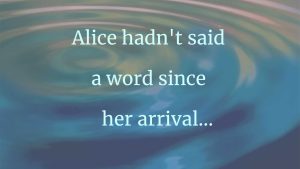
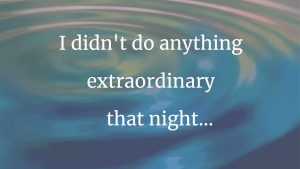
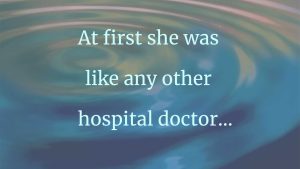
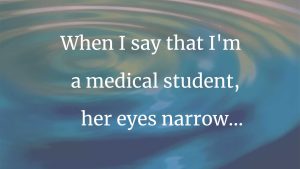

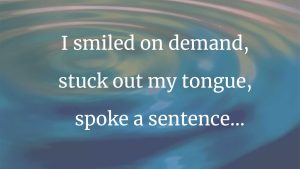
19 thoughts on “Finding the Upside”
Amy, I applaud your ability to turn a negative into a positive. You are a strong woman and a giver of strength to others. I wish you all the best.
Thank you for sharing your story and finding the platform for your voice. Scleroderma deserves have strong advocacy and support for those who live with it. I am on the board of the Scleroderma Research Foundation; my older son was diagnosed at 25 and thanks to a viral pneumonia, given his ILD, he died at 31. Advocacy, support, and research are key.
Thank you Sharon I am very sorry to hear about your son’s journey. This disease has been an ever changing itch I can’t seem to get rid of but my advocacy has been a light and outlet for me to share my experiences
Amy.. thank you for sharing your personal story. It’s meant to inspire and educate not only the scleroderma support group participants but any one who may feel vulnerable, different and not the regular fit with the regular per group of any age.
I had the opportunity to be educated by a group of rheumatoid arthritis patients during residency training in Family Medicine. That is when I realised their roles as individuals, family members and professionals.
I wish that this piece be transferred to our regional language in South India for sharing it with patients..
Sincere Regards..
Thank you Dr. Rahman I really appreciate your support and outlook on this disease.
This is a beautiful essay and should have been the winner of the writing contest. Thank you for sharing your life so openly and honestly.
Thank you for your words of encouragement
What an inspiring, uplifting story! And I love that you adopted those words of Popeye as your mantra. Kudos to you for your strength and sharing, and your honesty and openness. Great work!
Thank you for your support.
I hope you realize what a strong person you are. You could have become a cranky, bad tempered, bitter person. You are an unusual woman
Dorothy, I am so appreciative of your strong words of encouragement and support. My life has been forever changed but being an advocate has really been an uplifting journey.
Great story. Bravo. You have given so much.
Thank you Nancy.
Bravo. Such a moving portrait of the longing to belong. So grateful for your service, journey, and courage.
Helen I am grateful for your uplifting comments thank you for reading my article.
Amy, you are a GIFT not only to other patients sharing your diagnosis, but you are also a GIFT to those of us who care for patients. What you have to teach us cannot be learned from a book. Thank you for sharing your story and educating us all.
Thank you Nancy, my goal is to reach one and teach one about scleroderma because of the desperate need for more sustainable treatments. I hope this article can do that.
This is one of the most uplifting and inspiring essays I’ve ever read.
Thank you so much Chester. I am honored..